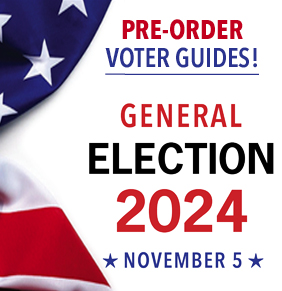Examining the Scorecard

Written by Oren Cass
Score one for the 2012 Republican autopsy. Notwithstanding this week’s “white working-class” wave, often linked to those voters’ purported latent racism and xenophobia, the net effect of Trump’s campaign was to make substantial progress with nonwhites relative to Romney’s performance in 2012.
Early Wednesday morning, exit poll data began to circulate that showed Trump improving the GOP’s standing with both African-Americans and Latinos. Less clear was just how central a role this shift played. To see the dramatic effect, compare the 2012 and 2016 exit polls that split the result by race.
In 2012, the electorate was 72 percent white (which went 59 percent Romney / 39 percent Obama) and 28 percent nonwhite (which went 81 percent Obama / 18 percent Romney), yielding a total margin of plus 3.1 percent for Obama. In 2016, the electorate was 70 percent white (which went 58 percent Trump / 37 percent Clinton) and 30 percent nonwhite (which went 73 percent Clinton / 21 percent Trump), yielding a total margin of plus 0.9 percent for Clinton.
The overall result is a 2.3 percent shift toward the Republicans. (Totals won’t sum due to rounding, and they won’t match final vote counts, because these are the exit polls.) We can allocate that shift across three changes: the shift in the mix of white and nonwhite voters; the shift in preferences among white voters; and the shift in preferences among nonwhite voters.
First, what if the electorate had shifted from 72/28 to 70/30 but Trump and Clinton had performed as well within the two groups as Obama and Romney had? The result would be 51.5 percent for Clinton (i.e., winning the 39 percent of whites that Obama won and the 81 percent of nonwhites that Obama won) and 46.7 percent for Trump. The Democrat advantage widens, from 3.1 percent to 4.8 percent. This makes intuitive sense: Obama won handily among nonwhites; hold all else constant but shift the electorate to be more nonwhite, and Clinton should win by even more.
Now, take into account Trump’s slightly better performance among whites. If the electorate shifted and Trump gained among whites, but Clinton held Obama’s margin among nonwhites, the result would be 50.1 percent for Clinton and 46 percent for Trump. Clinton would still have won by more than Obama, meaning the shift toward a nonwhite electorate more than cancelled out any gains Trump made within the white electorate.
Most of Trump’s progress came from the final component—the shift within the nonwhite vote—closing Obama’s 63 percent margin over Romney to only a 52 percent margin for Clinton. That change leaves the result at 47.9 percent for Clinton and 47 percent for Trump.
The Trump campaign didn’t produce a whiter electorate. In fact, if the only change in 2016 had been in white versus nonwhite turnout, Clinton would have increased Obama’s margin by 1.7 percent. Trump didn’t dominate the white electorate—his narrow gains there only sliced 0.7 percent off the Democrat advantage. The real gain came with minorities, cutting in by 3.2 percent, leaving the popular vote within one percentage point and helping tip the Electoral College. This is even simpler to see in isolation: whether nonwhite turnout was 28 percent or 30 percent, Trump’s 11 point net gain within that group was worth more than three points to the final margin.
A better case exists that Trump’s more dramatic improvement in Midwest swing states, which ultimately gave him the Electoral College and the presidency, relied on his performance with white voters. But even there, the story is complicated. Look at Pennsylvania (2012, 2016). The electorate did shift from 78 percent white to 81 percent white. But Trump actually won a lower share of that population (56 percent) than Romney did four years earlier (57 percent). A two-point drop in Clinton’s support relative to Obama left Trump with a net gain of 1 percent. He logged a net gain of 2 percent with African Americans. He logged a net gain of 10 percent with Latinos. Further, while white turnout appears to have increased about 10 percent in the state, a 20 percent decrease in African-American turnout accounted for two-thirds of the share-shift toward a whiter electorate.
Exit polls are just polls; real turnout analysis will have to await the final vote count. State-level information is also incomplete. But the available data runs directly counter to the casual assumption that Trump’s victory relied on narrow and exclusionary appeal, that it indicates an ascendant white identity politics, or that it portends further segregation of the electorate. In fact, nonwhite voters seem to have found the relative appeal of Trump’s message versus Clinton to be significantly stronger than that of Romney’s message versus Obama.
None of which excuses the noxious rhetoric and behavior put on display by the president-elect over the past 18 months or the genuine racism and xenophobia that he seemed willing to accept from some supporters. Those will remain rightful subjects for discussion and condemnation. But Trump may have won despite, not because of, all that. (On another dimension, Obama won 55 percent of women; Clinton won 54 percent.)
In June, I wrote about the aggressive identity politics embraced by the Clinton campaign in formulating its policy platform and message. A website like hers, focused on dividing society by race, gender, sexuality, and geography and then targeting promises to each segment might crash, I suggested, “if given the profile of a suburban white male for whom the Left’s identity politics has no agenda to offer. Or perhaps it would redirect to another survey designed for such submissions, hosted at donaldjtrump.com.”
I was wrong to assume that it would be only the suburban white males who Clinton redirected. Many others seem to have clicked away in disgust. When the dust clears, the hot takes on the End of America cool, and the bags packed for Canada go back in the closet, Americans will realize that we aren’t headed irrevocably toward a racially balkanized abyss. If we’re lucky, the next generation of politicians will realize that it is not in their interest to take us there.
Article originally published at City-Journal.org.













